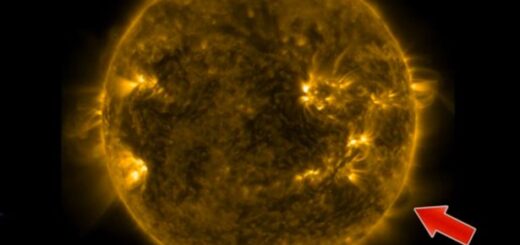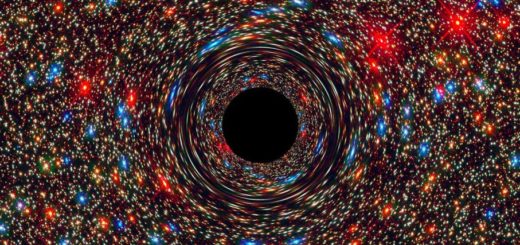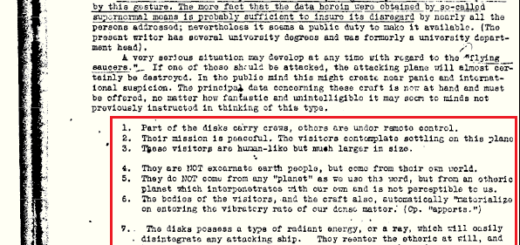Could Dark Matter Spawn ‘Shadow Life’?

The vast majority of mass in our universe is invisible, and for a while, physicists have been trying really hard to understand what this elusive “stuff” is. Assumed to be some kind of particle, there are hopes that the Large Hadron Collider might produce a dark matter particle or that a space telescope might detect the obvious gamma-ray telltale signature of dark matter particles colliding. But so far, hints have been few and far between; a problem that’s forcing theoretical physicists to think up new ideas.
In a mind-bending 2017 op-ed for Nautilus, famed theoretical physicist Lisa Randall delved into one of the more extreme possibilities for dark matter. Rather than thinking of dark matter as one type of particle, might dark matter be composed of an entire family of particles that create dark stars, dark galaxies, dark planets and, perhaps, dark life? This dark universe’s chemistry might be as rich and varied as our “ordinary chemistry.”
But don’t go getting excited about having a close encounter with these “dark aliens” just yet.
The Dark Matter Problem
Our universe is a wonderful, yet confounding place.
In the last few decades, we’ve come to realize that 84.5 percent of the universe’s matter is invisible. Given the rather awkward moniker “dark matter,” this stuff exists in a state that doesn’t interact with “ordinary” matter. Like “dark energy,” these things are “dark” because we don’t understand what they are.
If there was a lump of dark matter sitting on my desk, I’d have no way of knowing it was there. In fact, the dark matter lump couldn’t “sit” on my desk at all. It would fall through the desk and floor and down into Earth’s crust, speeding toward the gravitational well at the core of our planet. Or it might zoom off inexplicably into space. Dark matter is so weakly interacting that the lump would pass through all ordinary matter as if it weren’t even there.
On small scales, the gravitational effect of dark matter is minuscule, but over cosmological distances, dark matter’s presence is most certainly felt — it can be indirectly observed from its gravitational influence on clusters of galaxies and its impact on the spin of galaxies. So we know it’s out there, we just can’t see it.
However, we don’t know what “it” is, though there are theories.
Ordinary matter — aka baryonic matter — interacts via the electromagnetic, gravitational, weak and strong nuclear forces. These forces transfer energy and provide the structure of all matter. Dark matter, on the other hand, is usually viewed as an amorphous cloud of “stuff” that cannot interact via the electromagnetic, weak or strong forces. It is therefore assumed that dark matter is “nonbaryonic.” (Although there are some theories that hint at a baryonic source of dark matter — notably MACHOs, or massive compact halo objects. Only the gravitational effects of nonbaryonic matter can be observed when enough of the stuff clumps together.
The leading candidate in the dark matter search is the aptly named WIMP, an acronym for weakly interacting massive particle. As its name suggests, this hypothetical particle doesn’t interact with normal matter — it is therefore nonbaryonic.
Established cosmological models predict that dark matter — be it WIMPs or some other form like “axions” — gives our universe structure and is usually oversimplified as the “glue” that holds our universe together. Clumping like an expanding 3-D web, dark matter influences the evolution of galaxies. Like beads on a string, these dark matter clumps gravitationally corralled ordinary matter into clusters of galaxies with vast empty voids in between.
Astronomer Vera Rubin, while observing the spin of galaxies, first noted that most of the matter in galaxies cannot be seen. Only a small percentage is visible as the stars, gas and dust; the rest is held in a large yet invisible dark matter halo. It’s as if our visible galaxy of ordinary matter is merely the hubcap of a massive dark matter wheel that extends far beyond the bounds of what we can see.
In research published by Randall and her team in 2013, a more complex view of dark matter was explored and applied to this massive “dark galaxy” that our visible galaxy is embedded in. In this view, our galaxy’s dark matter halo isn’t composed of just one type of amorphous mass of nonbaryonic matter.
“It seems very odd to assume that all of dark matter is composed of only one type of particle,” Randall writes in her op-ed. “… an unbiased scientist shouldn’t assume that dark matter isn’t as interesting as ordinary matter and necessarily lacks a diversity of matter similar to our own.”
A Rich “Shadow Universe”?
Just as our visible universe is governed by the Standard Model of physics — a well-tested family of particles (including the famous Higgs boson) and forcesmight a rich and varied model of dark matter particles and dark forces operate in this dark galactic halo?
This research follows the logical path of assuming there’s a rich variety of unknown physics in the dark sector, might there be a universe — let’s call it the “shadow universe” – that exists in parallel to our own and possesses all the complexities our visible universe has to offer?
Astrophysicists have hypothesized in the past that “dark stars” — stars made of dark matter — may have existed in our primordial universe and may persist to this day. If this is the case, Randall argues, perhaps “dark planets” may have formed, too. She then takes this idea a step further: If there’s a family of dark matter particles, governed by forces only accessible in the dark sector, might this realm also have complex chemistry? If so, might there be life?
If there is “shadow life” living out its days parallel to our universe, you can forget any hopes of detecting it, however.
“You have no idea how cute dark matter life could be – and you almost certainly never will.”
Theoretical physicist Lisa Randall, writing in Nautilus
Shadow Life Will Remain in the Shadows
It might be tempting to use this hypothesis to explain away everyday mysteries or even paranormal claims that science cannot confirm. What if “ghosts” or inexplicable “lights in the sky” are these dark creatures making their presence felt in our realm?
Though this might make for a fun science fiction storyline, the dark creatures would live in the shadow universe that is wholly incompatible with ordinary matter. Their particles and forces would have no impact on our universe. I could be typing this article deep in a dark matter rainforest filled with creatures in a roaring dark matter ecosystem, but I’d have no clue.
But as we coexist with this shadow universe in the same spacetime – no extra dimensions or multiple universes required – there is one signal that could be transferred.
Gravitational waves were discovered only in 2016 and the first detection of these ripples in spacetime were caused by the collision of black holes. It seems plausible that gravitational waves would be detected in the dark sector as well as our universe, but only the most powerful cosmic events in the dark sector would be detectable here.
In short, we’ll almost certainly never prove the existence of cute dark matter creatures, but Randall makes an important point. When imagining the source of dark matter, we would be wise to move beyond our prejudice that dark matter is a simple particle; it could represent a complex family of dark matter particles and forces that are beyond what we can possibly imagine.



 Creators of mankind
Creators of mankind Description of “Tall white aliens”
Description of “Tall white aliens” Where they came from?
Where they came from? About hostile civilizations
About hostile civilizations The war for the Earth
The war for the Earth “Tall white aliens” about eternal life
“Tall white aliens” about eternal life Video: “Nordic aliens”
Video: “Nordic aliens” Aliens
Aliens Alien encounters
Alien encounters The aliens base
The aliens base UFO
UFO Technology UFO
Technology UFO Underground civilization
Underground civilization Ancient alien artifacts
Ancient alien artifacts Military and UFO
Military and UFO Mysteries and hypotheses
Mysteries and hypotheses Scientific facts
Scientific facts


















